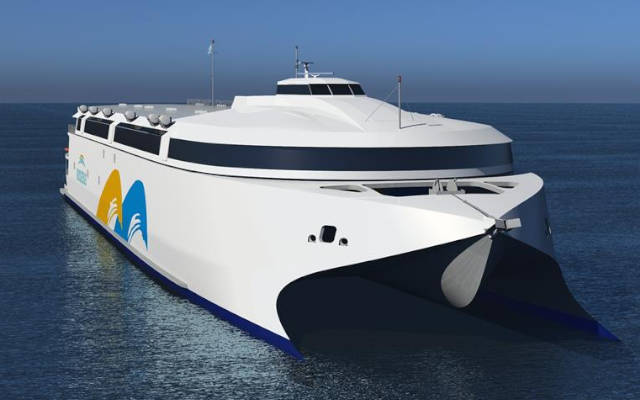Tasmania's Incat Wins Major Electric Ferry Deal in Denmark

Australian shipbuilder Incat Tasmania has landed a landmark contract to build two battery-electric high-speed catamarans for Denmark's Molslinjen, representing one of the most ambitious zero-emission maritime projects in the world to date. Each 129-meter vessel will carry up to 1,483 passengers and 500 vehicles across the Kattegat Strait at speeds exceeding 40 knots—entirely on battery power.
The ferries will be equipped with approximately 45 MWh of lithium-ion battery storage—among the largest maritime battery installations in operation globally. Construction is set to begin soon, with delivery expected in 2027. The project forms part of Denmark’s €468 million national maritime electrification initiative, which also includes investment in landside charging infrastructure.
The ships will be charged at both ends of their route using high-capacity, grid-connected shore power systems. Based on their size and daily operations, each ferry may consume between 90 and 180 MWh of electricity per day, depending on trip frequency. Collectively, the two ferries could draw over 65 GWh annually from Denmark’s power grid.
Powered by One of the Greenest Grids on Earth
Denmark's national grid is uniquely positioned to support this level of demand. As of 2025, more than 75 percent of Denmark's electricity is generated from renewable sources, led by wind power, which alone supplies over half the national demand. With major offshore projects like the Thor Wind Farm and the Bornholm Energy Island set to expand capacity further by 2027, ferry charging will align well with the country’s clean-energy roadmap.
The Danish Energy Agency expects full fossil-fuel phaseout in the electricity sector by 2030, making maritime electrification projects like Molslinjen’s not only feasible, but integral to national decarbonization goals. Port-side charging infrastructure will be configured to optimize usage of peak wind production periods, flatten demand curves, and offer demand response services to the grid when idle.
Although the ferries’ collective energy consumption is significant, it represents less than 0.2 percent of Denmark’s current annual electricity production—a manageable load that can be absorbed through smart-grid scheduling and real-time power balancing. In this context, ferry electrification is both a clean and grid-resilient strategy.
Economic and Industrial Upside in Tasmania
Incat's win also delivers major industrial benefits at home. The company will double its workforce over three years and expand its facilities at Hobart's Prince of Wales Bay and a new site at Sorell Creek. The yard's experience with lightweight aluminum vessels and energy-efficient catamaran hulls was a key differentiator in winning the Danish tender.
Company chairman Robert Clifford noted that Incat's production is powered by Tasmania’s own hydro and wind resources, further aligning with the project's renewable values. The contract is expected to elevate Incat as a global player in zero-emission shipbuilding, and it cements Tasmania’s position as a hub for next-generation maritime technology.
Why EVWORLD Readers Should Take Note
- Electrification is scaling beyond roads: These ferries showcase how electric propulsion is being adopted in heavier, long-distance transport sectors.
- Battery systems at grid scale: At 45 MWh per vessel, these batteries rival utility-scale energy storage in complexity and integration.
- Maritime infrastructure creates new opportunities: Charging stations, port upgrades, and smart-grid coordination are becoming part of the broader EV landscape.
- Proving a clean-grid concept: The success of this program shows how nations with high renewable penetration can enable zero-emission mobility at scale.
Bottom Line
Incat Tasmania’s electric ferry contract for Denmark is more than a shipbuilding milestone—it’s a signal of what’s next in transport electrification. With clean energy from Denmark’s advanced grid and scalable maritime battery systems, this project demonstrates how nations can decarbonize even their busiest passenger and freight corridors. For EVWORLD readers, it’s a glimpse into the future of electric mobility—beyond highways, into harbors.
Source: ABC News Australia, Electrive, Incat media release, Danish Energy Agency
Original Backlink
Views: 261
Articles featured here are generated by supervised Synthetic Intelligence (AKA "Artificial Intelligence").
